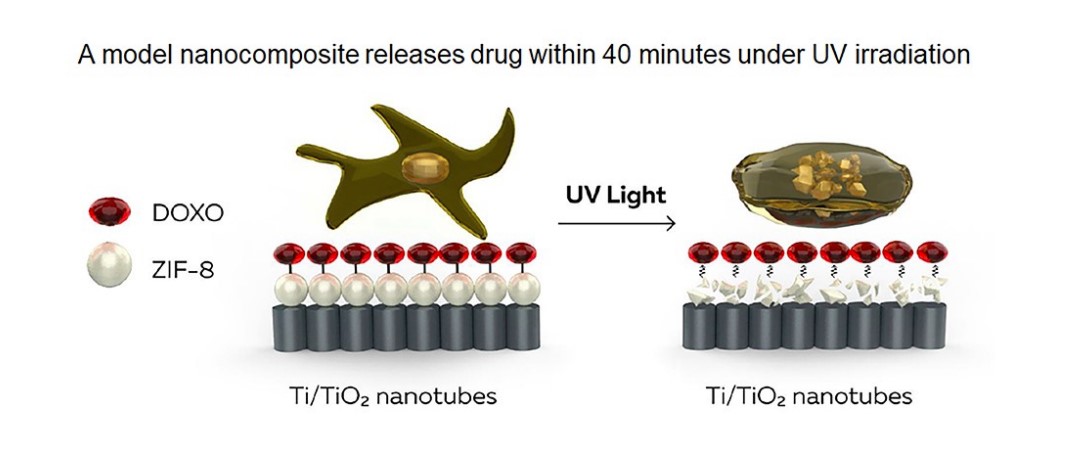Authors: Sharsheeva A., Iglin V.A., Nesterov P.V., Kuchur О.А., Elizaveta Garifullina, Evamarie Hey-Hawkins, Ulasevich S.A.,, Vinogradov A.V., Morozov M.I.

Abstract
Drug delivery systems based on the zeolitic imidazolate framework ZIF-8 have recently attracted viable research interest owing to the capability of decomposing in acidic media and thus performing the targeted drug delivery. In-vivo realization of this mechanism faces a challenge of relatively slow decomposition rates, even at elevated acidic conditions that are barely achievable in diseased tissues. In this study we propose to combine drug delivery nanocomposites with a semiconductor photocatalytic agent that would be capable of inducing a local pH gradient in response to an external electromagnetic radiation. In order to test this principle, a model drug-releasing nanocomposite comprising photocatalytic titania nanotubes, ZIF-8, and the antitumor drug doxorubicin has been investigated. This system was demonstrated to release the drug in a quantity sufficient for effective suppressing IMR-32 neuroblastoma cells, used as a model diseased tissue. With locally applied UV irradiation, this result was achieved within 40 minutes that is a relatively short time compared to release duration in systems without photocatalyst, typically taking from several hours to several days.
DOI: 10.1039/C9TB01377F
Read Full:
https://pubs.rsc.org/en/Content/ArticleLanding/2019/TB/C9TB01377F#!divAbstract